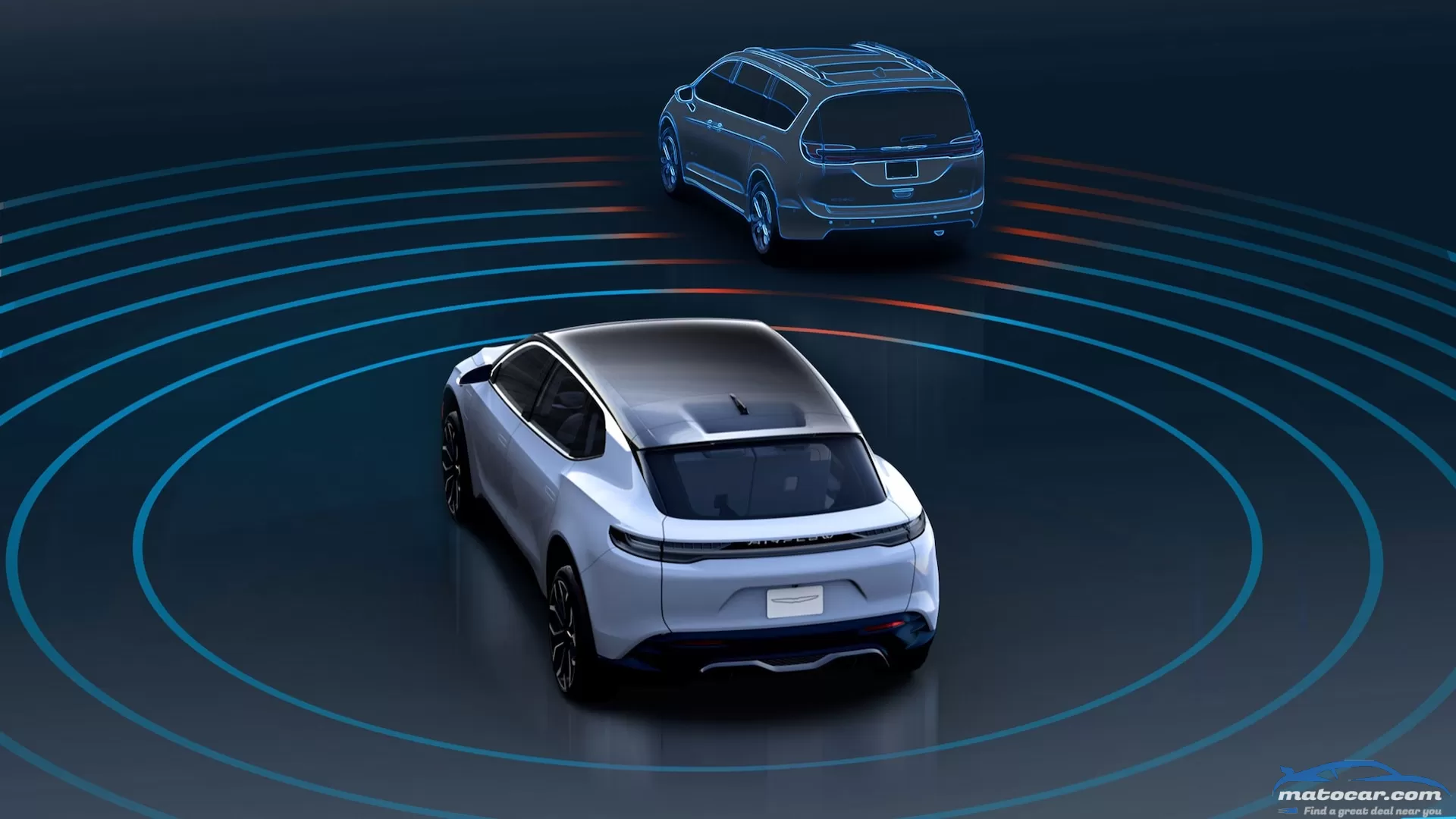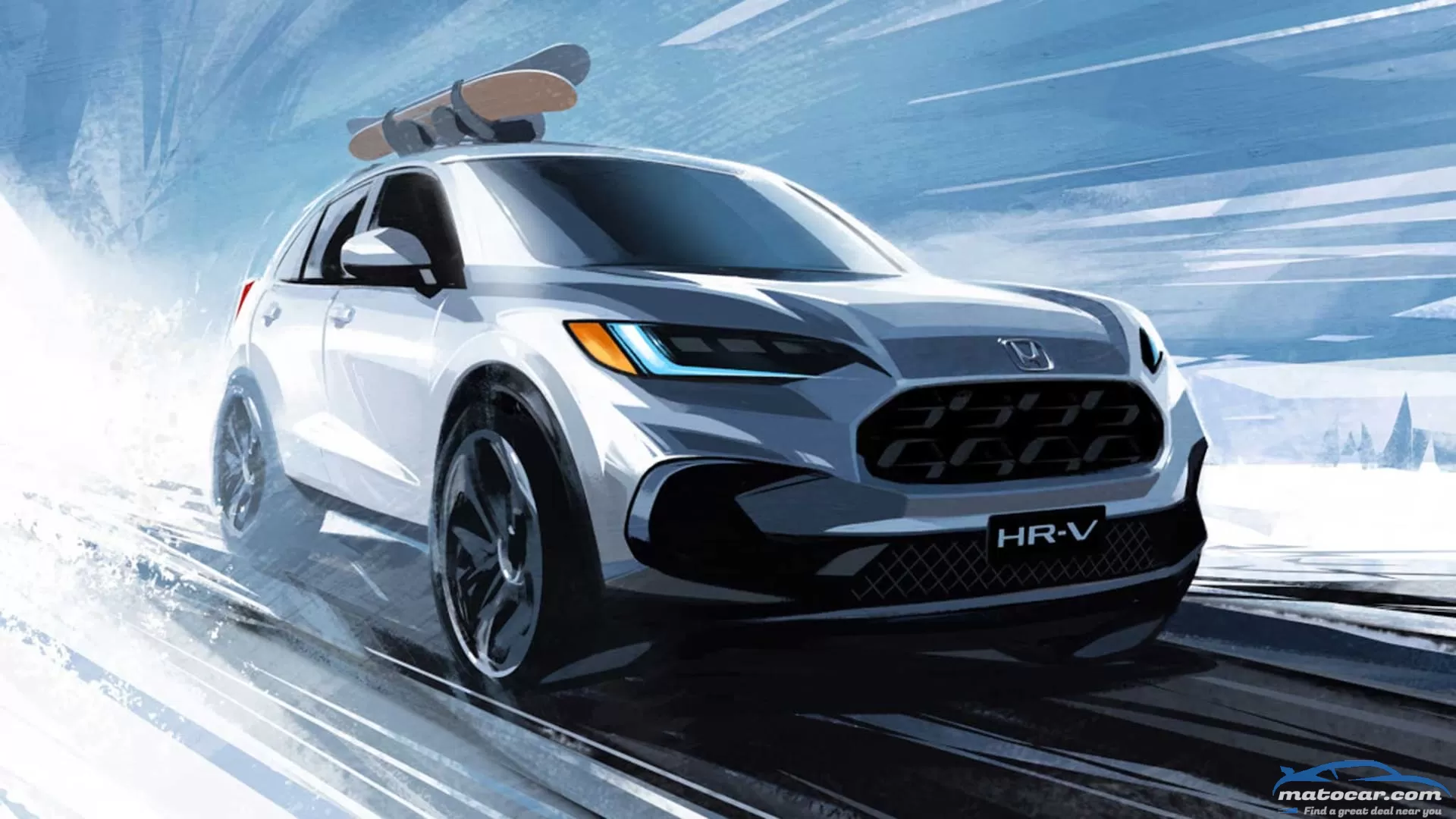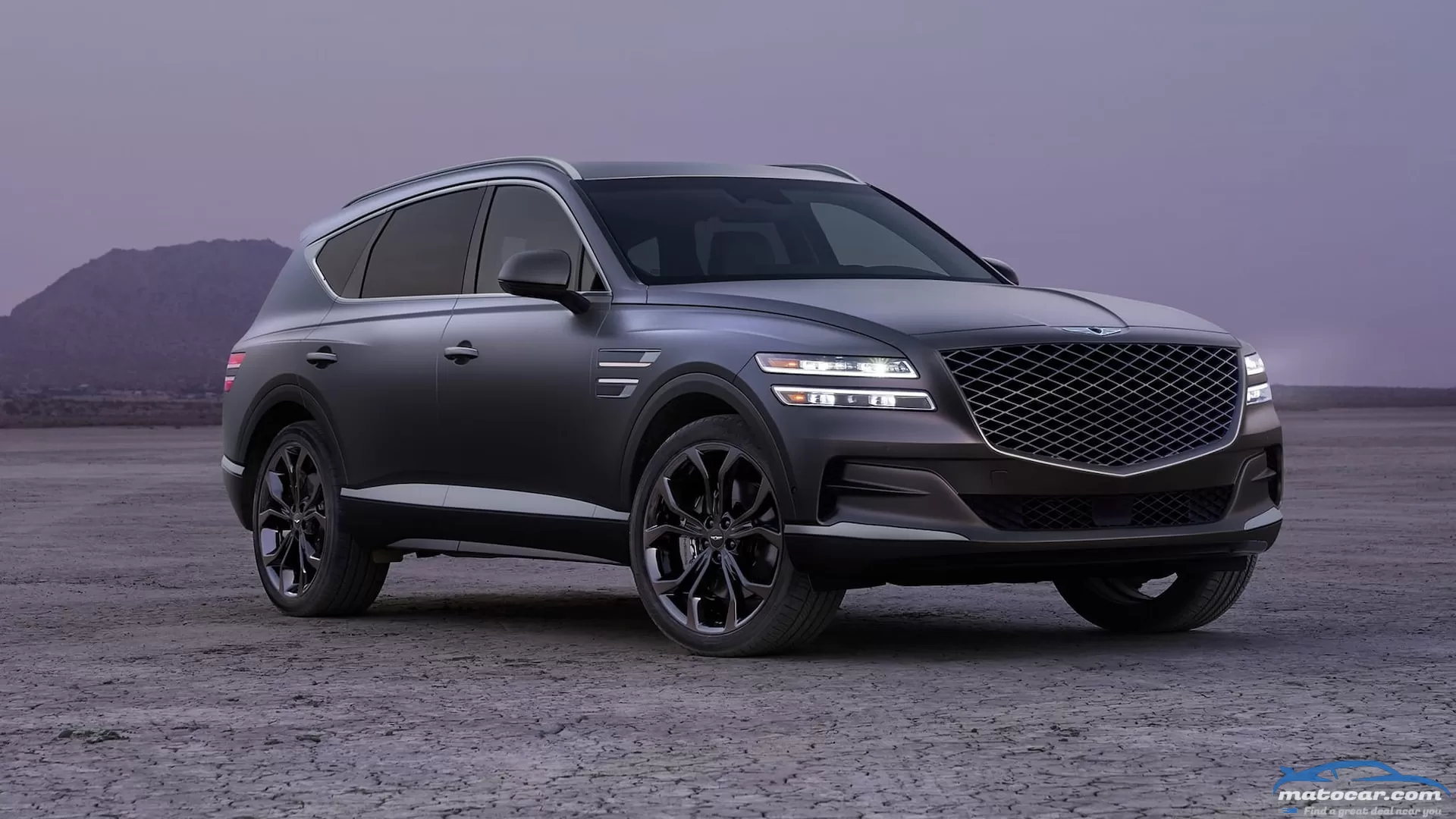So, Stellantis Is Becoming a Technology Company—Here’s How

Stellantis, the new brand formed after the merger of Fiat Chrysler Automobiles and PSA Group, is on the verge of transforming itself into a technology and mobility company. And the message is coming through loud and clear. Carlos Tavares, CEO of the company, opened his 2022 CES press conference by saying, "We are reimagining the future of mobility for generations to come as we quickly shift to a tech company, providing our customers with safe, sustainable and affordable mobility solutions."
While the transformation will take years, the company has already started outlining its plan. Stellantis' global chief technology officer, Ned Curic, told MotorTrend in an interview the work starts by simplifying. Currently, the big automaker has many different platforms it supports, and focusing on a couple will help lead this new transformation.
"If you look at traditional tech companies, or new technology companies, they don't have many platforms—maybe one, two, or three—but then there's software to differentiate," he said. "What we have to do is to simplify our technology dramatically."
Simplifying the hardware and using the software to differentiate its components will be the starting point in the transformation. Along with creating an immersive cabin experience, Stellantis plans to gain customer satisfaction as it starts to roll out the new technology.
Partnering with the right people to help a transformation is key in any industry, but particularly in the automotive sector. Stellantis announced a partnership with tech giant Amazon to use its software to bring over the air updates and use Amazon Web Services (AWS) as its cloud-based technology in Stellantis' future vehicles. Curic, who was vice president of Alexa Automotive at Amazon before moving to Stellantis, said both companies have a similar culture, where the customer comes first.
"My focus is on the simplification and software and Amazon knows really well how to do that, so we learn from them, they learn from us and it's a good marriage," he said. "We learn from them on the software side of the vehicle, because that's where they do exceptionally well."
While it's still unclear what kind of product the customer will be seeing from Amazon in Stellantis' cars, Curic said the Uconnect infotainment system will probably evolve into something else, but customers can expect a more diverse experience. One change where Stellantis will focus on is reducing the digital noise in the cabin, meaning smaller cars will not see screens all over the place.
"We're trying to be digitally quiet but precise in what customers want to do and remove friction. If you want to subscribe to an application in the vehicle, you should be able to acknowledge it with one tap or voice controls," Curic said.
The Chrysler brand will see a turnaround in the next few years as it enters a new era to become Stellantis' first technology brand, but that will quickly replicate to the rest of the group. The new cabin experience with Amazon, dubbed STLA SmartCockpit, will arrive in 2024, and will bring artificial intelligence and cloud solutions to the interior.
Transforming into a technology mobility company will not be an easy task, but a future roadmap of the products that it will use in the next eight years will be presented by Tavares on March 1, when the company will announce its plan for 2030.
You may also like
We got all excited when Honda introduced the new Euro-market HR-V (known in some parts of the world as the Vezel), but Honda was quick to tell us to calm the hell down—this wasn't the subcompact HR-V we were looking for. The U.S., Honda told us, would be getting a new HR-V all its own. Not to cast aspersions on our friends at Honda, but any time an automaker tells us something like this—any of them, not just Honda—we have to wonder if we aren't just being put off.Today, Honda released sketches of the North American-market 2023 HR-V (actually, they look like paintings, which is rather cool). And no, we weren't being put off—this definitely is a different vehicle. Look at the back doors, and what do you see? Door handles on the body. The new Euro-HR-V/Vezel has its rear door handles concealed in the door pillar, just like the current (and soon-to-be-outgoing) HR-V.From what the paint-sketches show, North America won the HR-V lottery, because if the real thing looks similar, it's going to be a much cuter critter than the HR-V going to Europe. We like the big blacked-out grille—it's rather Kia-esque, from the days when ex-Audi designer Peter Schreyer was trying to make all of his Kias look like Audis. It's certainly a better look than the chromed confusion of the bigger CR-V. (Honda has a new CR-V coming for 2023, and we hope it looks this good.) Speaking of Audis (which we were, weren't we?), the new HR-V's bulbous back end bears quite a resemblance to that of the Audi Q3. We're hoping the swank exterior style is an indicator of what we'll see inside. We rather like the HR-V, and we've always thought a more upscale version would do well with buyers.And what lurks under that handsome skin? Honda's two-sentence statement accompanying the sketches helps little. As a rule we don't copy and paste press releases, but we'll make an exception, given the dearth of other info here: "Honda kicks off its Year of the Crossover with a sneak peek at the all-new sporty and versatile 2023 HR-V. The all-new HRV will launch in North America this year." Okay, so that yields no information. If we had to guess—which, obviously, we do—we'd predict that one of the new HR-V's powertrains will be the 212-hp hybrid powertrain from the Euro-market HR-V, which is based around a 2.0-liter naturally aspirated engine.We assume there will be a non-hybrid version, and as we've complained about the current HR-V's leisurely acceleration, it wouldn't surprise us if its 1.8 liter engine is replaced by something with a little more gumption, perhaps the 2.0-liter naturally-aspirated engine from the entry-level Civic and (if we're lucky) Honda's 1.5-liter turbo, also found in the spectacular new Civic.The fact that the sketches show the HR-V dashing through the snow with snowboards strapped to the roof rack indicates an all-wheel-drive option. That may seem like a no-brainer for an SUV, but remember that some entry-level sport-utes (Toyota CH-R and Nissan Kicks, to name two) don't offer AWD; today's HR-V does offer AWD, however.Whatever the final HR-V looks like and however it's configured, this teaser has done its job: We are genuinely excited to see what the real thing looks like. We don't need to tell you what a hot market segment the compact SUV field is, one chock full of new and credible contenders like the Toyota Corolla Cross, the Kia Seltos, and our pick of the bunch, the Subaru Crosstrek. We're looking forward to seeing how the new 2023 Honda HR-V stacks up.
Genesis is no amateur at creating vehicles as tailored for being driven as being chauffeured in. The Genesis G90 is as comfortable as flagship sedans get, but the automaker is expanding its first-class rear-seat horizons—this time with its flagship SUV. Enter the 2022 Genesis GV80 Prestige Signature, a four-passenger, two-row-only version of the luxury crossover that will serve as the pinnacle of the GV80 lineup.The GV80 Prestige Signature builds on the 3.5T Prestige trim, adding a wireless charger and captain's chairs in the second row and five-spoke dark finish wheels. Customers will only be able to pick between two exterior matte colors (Melbourne Gray and Matterhorn White), and two interior choices (Black with Olive Ash and Ultra Marine Blue/Dune with Olive Ash). Genesis also added a matte chrome trim to distinguish the fancy models from other GV80s.While Genesis hasn't revealed any pictures of this specific model's rear seats, we presume that area will look very similar to the Prestige Signature model sold overseas and pictured above. (The global version has a third row.) A center console between the two seats will allow backseat passengers to control the infotainment, and they'll have their own climate-control system. Although the model sold elsewhere has a rear-seat entertainment package, it doesn't look like we'll get that here. Besides enjoying a more comfortable seating position, those traveling in the rear will have access to Relax Mode, which reclines the seat to your preferred position.Under the hood, the Prestige Signature will be powered by the 3.5-liter twin-turbocharged V-6 engine found across the lineup and which makes 375 horsepower and 391 lb-ft of torque. An eight-speed automatic transmission sends power to all four wheels via standard all-wheel drive.A total of just 600 GV80 Prestige Signature models will be sold in the U.S., each one carrying a $78,295 price tag. That's a $4,500 increase from the Prestige model. The 2022 Genesis GV80 Prestige Signature is starting to arrive to dealerships now, and we hope to drive it—or be chauffeured in it—in the coming weeks.
Miss the Big Game this year? Maybe you don't get into the whole "sports thing." Either way, the commercials are always a huge part of the Super Bowl broadcast. Seeing as how you're reading about those game-day ads here, on MotorTrend, guess what? We're going to talk about the car commercials from Super Bowl LVI, of course! Here's a quick recap of the car spots we spotted during the game:Chevrolet | "New Generation"Fans of "The Sopranos" probably spat out their drinks and sat up when the HBO series' theme song "Woke Up This Morning" started oozing from their speakers while the show's opening sequence driving from New York City to New Jersey rolled on. But something in the iconic opening is different...James Gandolfini's Tony Soprano isn't peeking at us through the rearview mirror...it's his on-screen daughter, Meadow (Jamie-Lynn Sigler). And there's something different about Tony's '90s Chevy Suburban...the dashboard looks way too modern. Without giving away the ending, "New Generation" reimagines the Sopranos' original family ride as the new Silverado EV pickup. Cool.Hyundai | "History Of Evolution"Starring actor Jason Bateman in his more usual comedic guise—as opposed to his darker turn in the drama "Ozarks" on Netflix—this Hyundai ad runs viewers through major technological developments throughout history while reminding them that those developments always had a rough start. This pivots, eventually, to the concept of an electric vehicle, which Bateman says is now reaching maturity—thanks to, of course, the new Ioniq 5 electric crossover. We're not sure about the Ioniq 5 being the be-all, end-all of EVs, but it is a darn good battery-electric SUV. And affordable, too.Kia | "Robo Dog"This Kia spot is cute and includes a dog, ripping a page out of Subaru's advertising playbook. But while general audiences might find the robot-puppy-finding-a-new-home-with-a-human plotline endearing, it takes a closer read to realize Kia is plugging (pun intended) the new EV6 electric crossover's ability to power other things using its battery. To wit, at the end of the commercial, the robo-dog is "saved" by an EV6 driver using its "vehicle-to-load" charging function, which can deliver electricity from the battery to external sources, be it a large appliance during a power outage or a stricken robotic puppy.Nissan | "Thrill Driver"Viewers should by now be familiar with actress Brie Larson making appearances in Nissan ads. For the Super Bowl, Nissan throws in a few more stars, including Eugene Levy, Dave Bautista, and Danai Gurira, to shill an unlikely car: The 2023 Z sports car. Hey, we're all for sports cars, but it's definitely unusual for an automaker to use such high-dollar ad space for a low-volume, two-seat sports car.BMW | "Zeus & Hera"BMW's ad leverages the high-wattage star power of Arnold Schwartzenegger and Salma Hayek but fails to generate much of a spark for the new iX electric SUV. Basically, Arnold plays Zeus and Hayek plays Hera; the god is retired yet is always being asked to charge up dead electronic devices using his lightning power (thunder?). Clearly tiring of his role as a god-smartphone-charger, Zeus is relieved to be given an iX by Hera, presumably because it zaps up Zeus rather than the other way around.GM | "Dr. EV-il"Reprising his role as Dr. Evil from the iconic Austin Powers comedies, Mike Myers holds court in one of his classic boardroom scenes with other original castmembers, including his son Scott (Seth Green); number two, Number Two (Rob Lowe); and Frau Farbissina (Mindy Sterling), while discussing his latest plans for world domination. Only one hitch: Climate change, which is billed as a pressing issue to first surmount. Dr. Evil must save the world in order to take it over, in essence, and needs to lower his carbon footprint to help. This is where GM's growing lineup of EVs comes in to play, and explains why Dr. Evil has anything to do with GM's EV lineup—Dr. EV-il, get it? The gang drives off in a new Hummer EV, a Silverado EV, and what appears to be a Cadillac Lyriq.Porsche | "Topgun: Maverick x Porsche"Porsche is one automaker that likely doesn't need to advertise, but here they are! This is less a commercial for a specific Porsche model than a crossover ad for its sports cars and the upcoming sequel to "Top Gun." If you remember the original fighter-jet bromance cinematic masterpiece, then you remember the love interest of Tom Cruise's character drove a classic Porsche; we assume, based on this ad, that a Porsche will feature in the new film, "Top Gun: Maverick." Really, it doesn't matter, because Porsche has wisely leveraged one of the best theme songs ever for a car ad.Polestar | "No Compromises"The brief, simple commercial from Polestar, Volvo's all-electric offshoot, seems effective. Listing several "no" phrases while flashing over the body of a Polestar 2 EV, "No Compromises" is a quiet introduction for Polestar on a stage as big as the Super Bowl, but it'll surely get people talking, and that's exactly what an upstart automaker wants.




0 Comments